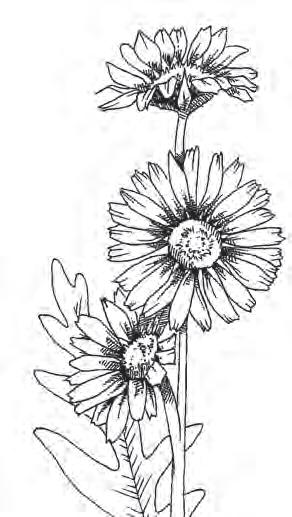
2 minute read
Trees
Our black maple (Acer nigrum), bur oak (Quercus macrocarpa), and downy hawthorn (Crataegus mollis) trees require increased soil depth to allow for root growth. To accommodate the extra weight of the tree mounds, we planted them in line with the interior columns of the building. The weight of the trees and soil is carried efficiently by load paths straight down to the building’s foundation.
BLACK MAPLE
Advertisement
Spring Bloom 36. Acer nigrum, commonly known as black maple, is a species of deciduous tree in the soapberry family (Sapindaceae). It grows from 60 to 75 feet tall and 40 to 60 feet wide with ascending branching and a dense rounded crown. It performs best in full sun to partial shade in moist soils with some tolerance for drought. Similar to sugar maple, it is distinguished by its grayish brown to grayish black trunk bark that becomes rough and furrowed with age, as well as by its dark green, pointed, lobed leaves with hairy undersides. Pale yellowish green flowers appear in clusters in spring, while the leaves turn yellow, orange, and red in the fall. Its tree sap can be tapped for syrup. Although it is a hardwood tree, its softer sapwood is commonly used for lumber. Black maples can live up to 200 years.
BUR OAK
Spring Bloom 37. Quercus macrocarpa, commonly known as bur oak, is a species of deciduous tree in the beech family (Fagaceae) that is endemic to central and eastern North America. It grows from 60 to 80 feet tall and 60 to 80 feet wide with a broad-spreading, rounded crown. It performs best in full sun in well-drained soils and has good drought tolerance. It may take up to thirtyfive years to bear its first crop of acorns, which feature moss- or bur-like fringed edges. Its bark is light gray-brown and its leathery, dark green leaves are variable in shape with lobed margins. Yellowish green flowers blossom as leaves emerge. In the fall, its leaves turn yellow-brown. Its wood is heavy, hard, and straight-grained and is often used for timber. Bur oaks can live up to 400 years.
37.

36.

DOWNY HAWTHORN
Late Spring Bloom 38. Crataegus mollis, known as downy hawthorn or red hawthorn, is a species of deciduous tree in the rose family (Rosaceae). It grows from 20 to 35 feet tall and 20 to 40 feet wide, with a dense crown of thorny branches and an ash-gray trunk. It performs best in full sun to partial shade in moist to average, well-drained soils but is tolerant of drought. Its oval, medium to yellowish green leaves have lobed, tightly serrated margins and a rough, hairy texture. Small white flowers bloom in late spring, while its bright red edible fruit ripens in late summer and early fall when its leaves often drop. Its wood is dense and rot-resistant. Hawthorns can live up to 400 years.
38.











